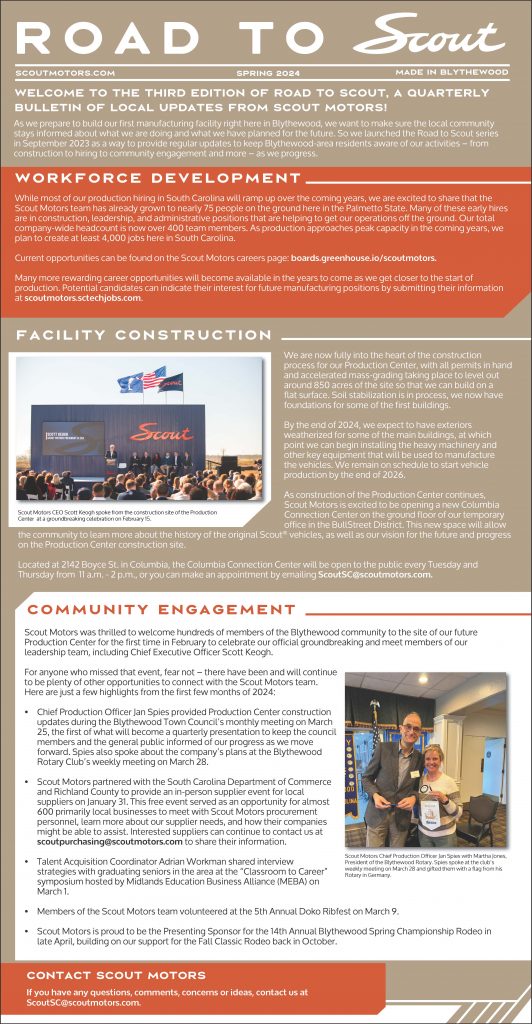Less than two hours away, about 92 miles to the southwest, you’ll find a rich history. A town that can boast it’s the home to 10 governors, an historic pottery tradition and strange-but-colorful turkey art. We’re talking Edgefield where the statue of Strom Thurmond overlooks the town square. You’ll see classic antebellum homes, antique shops, an old carpenter’s stand, majestic old cemeteries and lots of history. Just outside the town limits you’ll find the headquarters of the National Wild Turkey Federation.
Founded in 1785 as a trade center for farmers, Edgefield went on to develop some famous native sons. Its 10 governors are Andrew Pickens, George McDuffie, Pierce Mason Butler, James H. Hammond, Francis W. Pickens, Milledge Luke Bonham, John C. Sheppard, Benjamin R. Tillman, John Gary Evans and J. Strom Thurmond.
Politics and pottery — that’s Edgefield. It’s not surprising a pottery tradition has long flourished in Edgefield with its rich resources of kaolin, sands, feldspars and pines. Edgefield’s pottery history is a good one. Plantations here led to a demand for large-scale food storage and preservation. In the 1800s, slaves made traditional, alkaline-glazed pottery much as they had in Africa. Particularly notable were the “grotesques” or “voodoo jugs” upon which slave potters applied facial features.
Jane Bess still makes pottery in Edgefield. Jane, a Charleston native and University of Georgia graduate, makes gorgeous, functional stoneware. In an historic brick building, circa 1918, just off Main Street, you’ll find her charming shop and studio. Jane, who once lived in Atlanta, says the real America lives in small towns.
Edgefield’s most famous potter, Dave, was born around 1800. Dave left 30 years of verified work, from 1834 to 1864. In 1840, Dave began signing his work, not by merely stamping his initials on the base, as was the custom, but by writing “Dave” on the shoulder of most vessels. His jars and jugs provide a glimpse into life back then.
On one piece, Dave inscribed “I wonder where is all my relations / Friendship to all and every nation.” This couplet, inscribed April 16, 1857, alludes to the buying and selling of slave family members. On another piece, dated August 7, 1860, he wrote, “I saw a leopard and a lion’s face / then I felt the need of grace.” Perhaps it references the Bible, a dream or stories passed down by African ancestors. Historians surmise that Dave learned to read and write, perhaps, while working as a typesetter for an owner, Abner Landrum, who published a newspaper, The Edgefield Hive.
Enjoy a day trip to Edgefield. It’s not that far away from you and it’s a great place to just walk around. Ask locals about Horn’s Creek Church and its hand-painted angels in each corner of the ceiling . . . down a dirt road.
Edgefield. It’s worth the drive . . . Plan a trip when the peach trees are blooming and breathtaking beauty will be your companion.
If You Go …
• www.edgefieldsc.net
Learn more about Tom Poland, a Southern writer, and his work at www.tompoland.net. Email day-trip ideas to him at [email protected].








